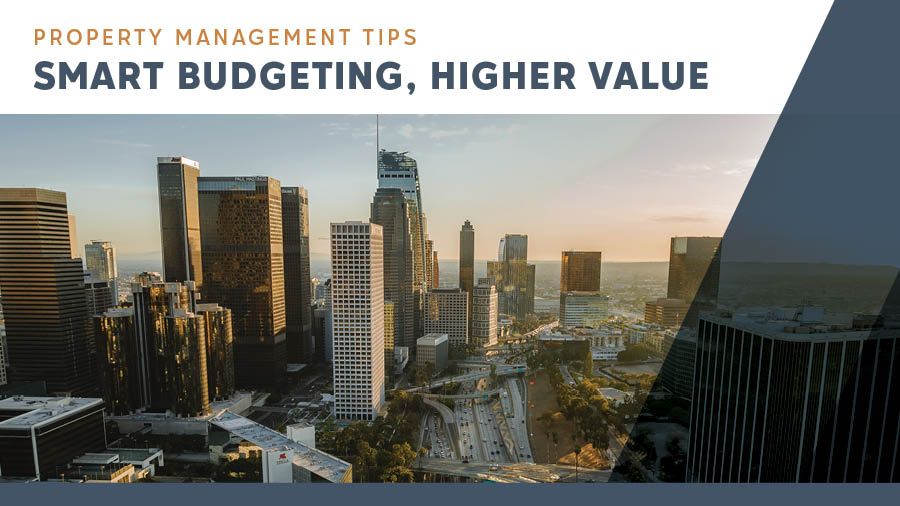
The Importance of Annual Budgeting & Building Maintenance
As we enter the Fall season, it’s important to be reminded of the critical importance of maintaining your commercial real estate assets. By strategically allocating funds for maintenance now, property owners can preserve asset value, ensure the long-term sustainability of their investments, and improve tenant satisfaction while also feeling financially prepared for the future.
Annual building maintenance isn’t solely about fixing things when they break; it’s about adopting a proactive approach before issues arise. This entails creating an adequate budget to prepare financially for the upcoming year. Here is an overview of what our team typically includes in that budget:
GENERAL EXPENSES
Your budget should encompass general expenses, including utilities, insurance coverage, security, and landscaping. Conducting regular monthly on-site inspections is crucial for identifying and addressing maintenance issues promptly. This includes ensuring appropriate upkeep of landscape irrigation systems and undertaking winter preparation tasks such as roof checks, clearing downspouts, and inspecting fire safety features to mitigate weather-related risks. Additionally, there should be a five-year certification on fire sprinklers (with annual inspections) as well as fire extinguishers that are inspected by the fire department.
CAPITAL EXPENDITURES
An annual budget should also allocate funds for capital expenditures that prioritize several key areas. This includes exterior paint, HVAC systems (AC units), structural elements, drought-tolerant landscaping upgrades, and regular maintenance of parking lots and driveways, including slurry sealing and striping every two years. Flexibility should be built into your budget to address issues that change each year, such as meeting updated building codes and complying with ADA requirements to provide accessibility for all occupants.
RENTAL INCOME
When budgeting for rental income, property owners must consider tenant lease expiration dates to anticipate turnover and associated expenses such as cleaning and repairs. This also underscores the importance of adjusting rental increases accordingly. Historically, the average annual rent increase has hovered at three percent per year, but during the pandemic, this rose to between four to six percent. However, we are now witnessing a more stabilized increase of around four percent per year on average. By factoring this into their plans, property owners can maintain profitability and adapt to fluctuating market conditions effectively.
KEY TAKEAWAYS AND RECOMMENDATIONS
On behalf of our clients, our team always pays close attention to details that could impact your annual budget. We are committed to providing consistent service and reliable communication that maximize your property’s value and underscore the importance of annual maintenance.
As we see every year, it’s imperative not to overlook these general building expenses and capital expenditures to save money, especially for older buildings that require updates. Additionally, depending on the updates, there may be city or state incentives available to offset expenses, particularly for water and energy usage. When acquiring new accounts, especially those that were previously self-managed, we conduct a thorough review of ADA compliance to ensure adherence to regulations and avoid potential liabilities.
_______________________
